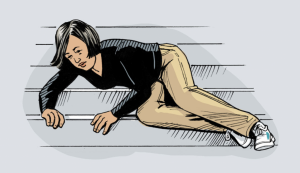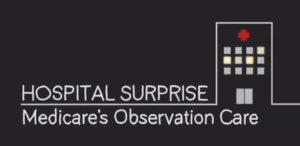By Tara Parker-Pope @nytimeswell
Think
Aging well means taking care of both the body and the mind. Most of what we do to keep our bodies fit is also good for the brain.
DANCE LIKE NO ONE’S AGING
Learning while moving may be a potent way to slow the effects of aging, strengthening both the body and the mind at the same time. One study compared the neurological effects of folk dancing with those of walking and other activities.
During the research, 174 healthy people in their 60s and 70s, most of whom were sedentary, agreed to undergo tests of their aerobic fitness and mental capacities, including processing speed and a brain scan with a sophisticated M.R.I. machine. Then the participants broke off into activity groups that included brisk walking three times a week, a program of gentle stretching and balance work and a dancing group.
For the dance group, men and women showed up to a studio three times a week for an hour and practiced increasingly intricate country-dance choreography. Each participant learned and alternated between two roles for each dance, increasing the cognitive challenge. After six months, brain scans of the dancing group showed improvements in the part of the brain involved with processing speed and memory.
Notably, almost everyone in the study performed better on thinking tests whether they took part in the walking, stretching or dancing intervention. But the cognitively-challenging dance appeared to have the biggest effect on the brain, suggesting that activities that involve moving and socializing have the potential to perk up an aging brain.

TAP INTO YOUR INNER ARTIST
Art can inspire an aging body and mind. Activities as diverse as music, dance, painting, quilting, singing, poetry writing and storytelling add meaning, joy and a vibrant sense of well-being to the lives of older people.
Evidence of the benefit of art for aging comes from the Creativity and Aging Study, a controlled study sponsored by the National Endowment for the Arts. The study sorted active seniors aged 65 and older into an intervention group and a control group. The control group maintained its usual activities — the only difference was regular check ups with the study researcher. The intervention group was assigned to an intensive community-based art program, conducted by professional artists. The lucky participants took up painting, creative writing and poetry, jewelry making, pottery and singing in a chorale. They met weekly for art instruction and also attended concerts and art exhibits.
Over the course of the study, some striking trends emerged. While everyone in the group obviously continued to age, the people in the arts programs seemed to be aging more slowly. Overall, the health of participants in the arts program stabilized, compared with declines in the control group. Compared with the control group, they used less medication, were less likely to fall and had fewer doctor visits.
Why would creating art make a difference to health? One reason may be the sense of control one feels during the creative process. Art projects are also sustaining — you come back to them again and again. The artists teaching the programs described how the participants were exhilarated by the process and they were motivated to continue after each creative endeavor.
So what does this mean for you? If you want to improve your chances of aging well, consider exploring your inner artist. Sign up for that pottery class you’ve always wanted to take. Join a creative writing seminar. Take up photography, knitting or painting, and join a group of fellow artists to improve your social network and to share with others the exhilarating feelings of creating art.
TRY YOGA AND MEDITATION
Studies have found that people who run, weight train and dance have a lower risk of developing dementia than people who are not physically active at all. But if you don’t have the ability to take part in vigorous activity, there’s another option. A weekly routine of yoga and meditation may strengthen thinking skills and help to stave off aging-related mental decline.
One study compared people who took part in yoga with a group doing mental exercises as part of a brain-training program. The yoga participates spent an hour each week learning Kundalini yoga, which involves breathing exercises and meditation, as well as movement and poses. The researchers chose this form of yoga largely because people who are out of shape or new to yoga generally find it easy to complete the classes.
The yoga group also was taught a type of meditation known as Kirtan Kriya, which involves repeating a mantra and finger movements, and asked to meditate in this way for 15 minutes every day. The total time commitment to either yoga and meditation or brain training was equivalent for both groups.
After 12 weeks, those who had practiced yoga and meditation showed improvements in their moods and scored lower on a scale for potential depression than the brain-training group. They also did better on a test of visuospatial memory, a type of remembering that is important for balance, depth perception and the ability to recognize objects and navigate the world. In reviewing the brain scans, researchers found those who had practiced yoga had developed more communication between parts of the brain that control attention, suggesting a greater ability now to focus and multitask.



